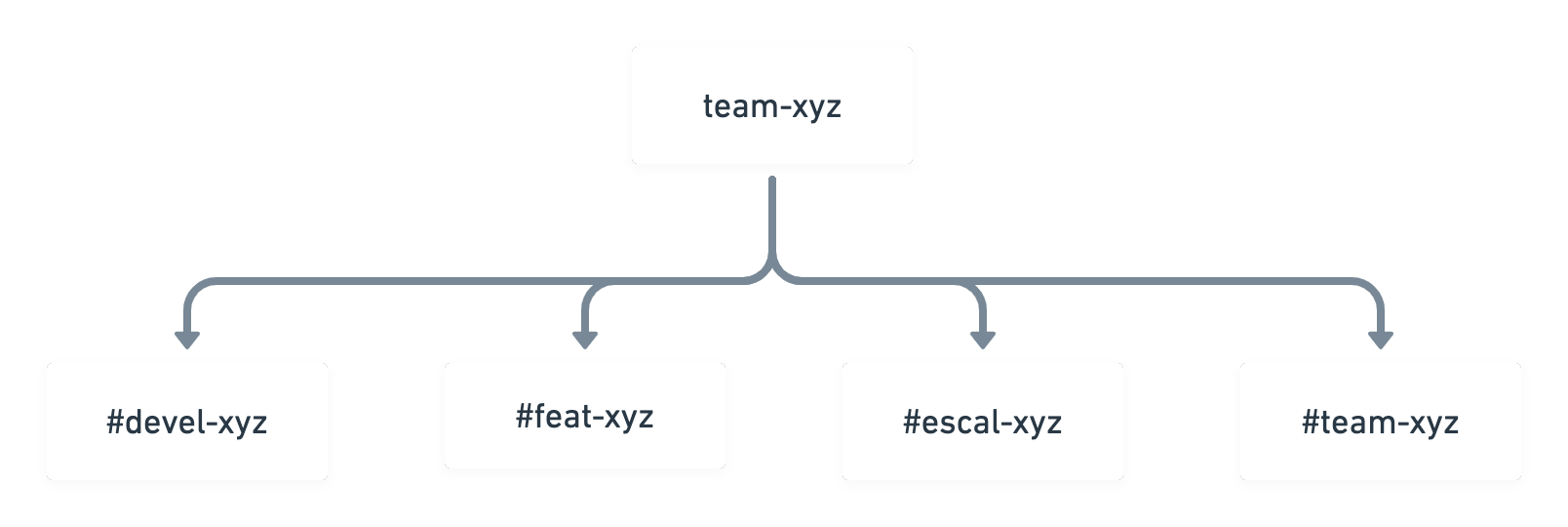💬 Managing Your Slack Instance
25 Dec 2020
Searchable Log of All Communication and Knowledge (aka your Slack instance) could get chaotic if not managed well. But if managed well, it saves a lot of meetings in your company. And why should you trust me? I was part of Slack for 15 months, and I have used Slack the way Slack uses it.
And why is it important to you?
Managing Companies Slack instances effectively will change many things for you; Less confusion, less chaos, less disturbance, fewer meetings, and more productive time.
Managing your Slack instance has a simple formula, But requires a lot of unlearning. Before going into managing Slack instance, we will see the pros and cons of using Slack in your company.
Pros
- Get structured internal communications among channels.
- You can use it with other companies (your clients, vendors) using Shared channels.
- Integrate all your tools in one place.
Cons
- If not maintained well, it could create a lot of noise.
- Essential messages could get lost in all the chaos.
- Everything seems ASAP.
- Everyone is working all the time.
The structure that works for considerably bigger companies/teams
Divide your entire company into multiple teams. So here we are building channels for team “search.”
There will be one channel called team-search. This will be the place for everyone inside the company interested in knowing what’s happening with Search.
Then there will be team specific channels:

| Channel | Purpose |
|---|---|
devel-search |
Channel specific to developers of the team. This involves discussions specific to development flows etc. |
escal-search |
Channel specific to escalations. Here you will integrate all your tools like NewRelic, Datadog, Pagerduty, CloudWatch alerts to escalate your service anomalies. |
prod-search |
Channel specific to product discussions, requests, etc. |
You can extend this naming convention for any other cases like
- For interview channels:
intw-akshay-deo. - Announcement channels:
announce-search.
The second minor rule is: using threads heavily. Unfortunately, Slack’s structure does not force everyone to use threads. But with enough practice, separate conversations can be kept/forced to carry in a separate thread inside a channel. This practice does wonder for managing information inside Slack.
I have successfully replicated this structure across different teams, and it does work in most cases. Initially, it takes time to build the team’s muscle memory, but this is achievable with time and enforcement.
Clarifying the intent of urgency
While using Slack, follow the etiquette of explaining the urgency of the answer/task. Something like,
(Not Urgent) Could someone help me with this?
(ASAP) Server 123 is responding with 500; need immediate attention!!
This etiquette gives clarity about how and when to react to everyone inside the channel.
Use User Groups on Slack
Slack has user-groups like email lists. Use them heavily to convey your messages to a group of people. Mainly create user groups for the teams. Like @team-search and add everyone who is part of the team. This way, whenever you’re communicating something at the team level, you can use @team-search instead of adding everyone manually (and forgetting someone :D)
Use Emojis for conveying the actions on a message.
Slack (for all the right reasons) does not have read receipts, but they have a fantastic feature of reacting to messages. So “👀” for telling that you have seen the message or “✅” to show you completed the request goes a long way!
Workflows are gems
Workflows are like Zapier inside your Slack. I usually use these workflows to push the JIRA daily update reminders, Individual OKR update reminders, etc. You can build complex flows with Workflow if it’s required. See here for the details.